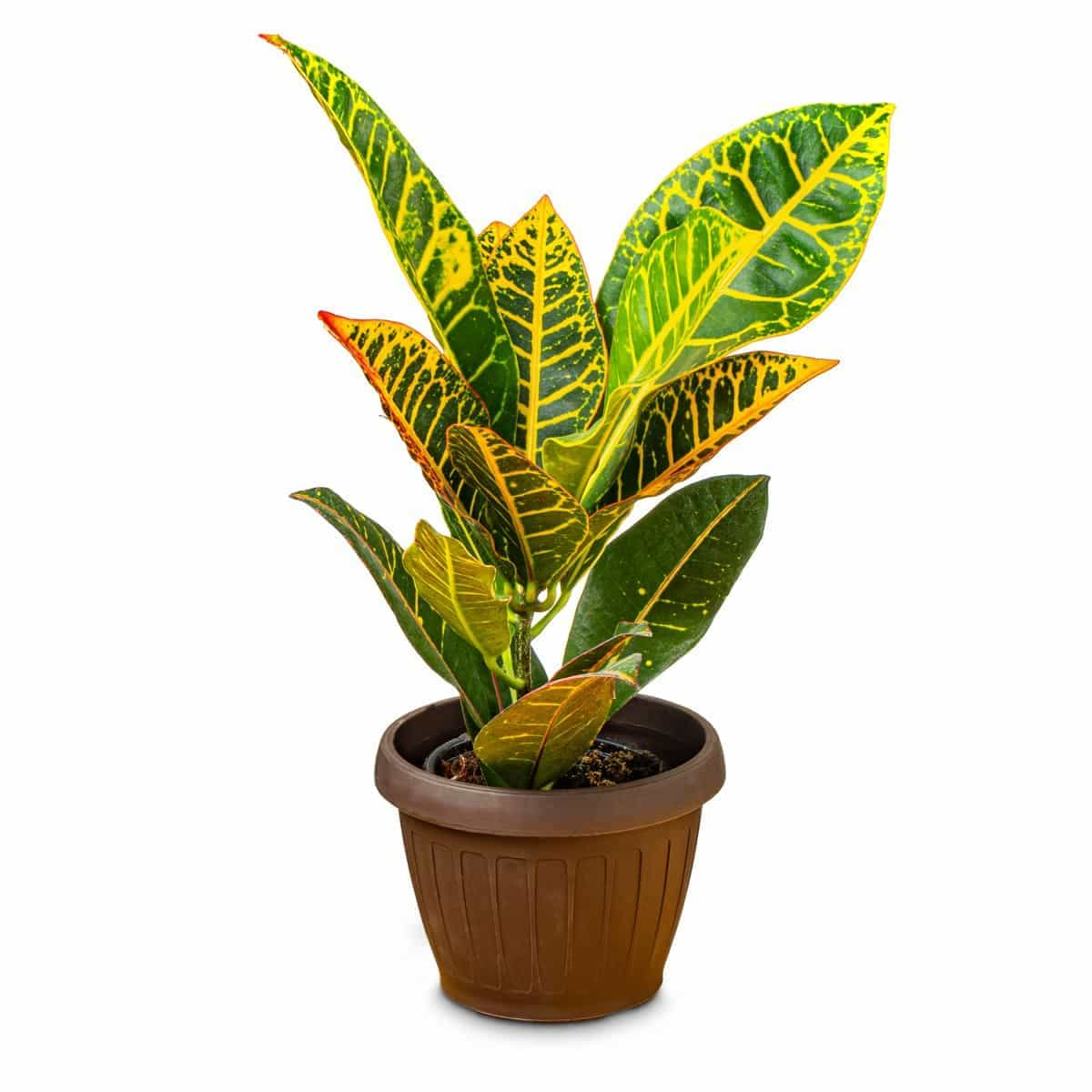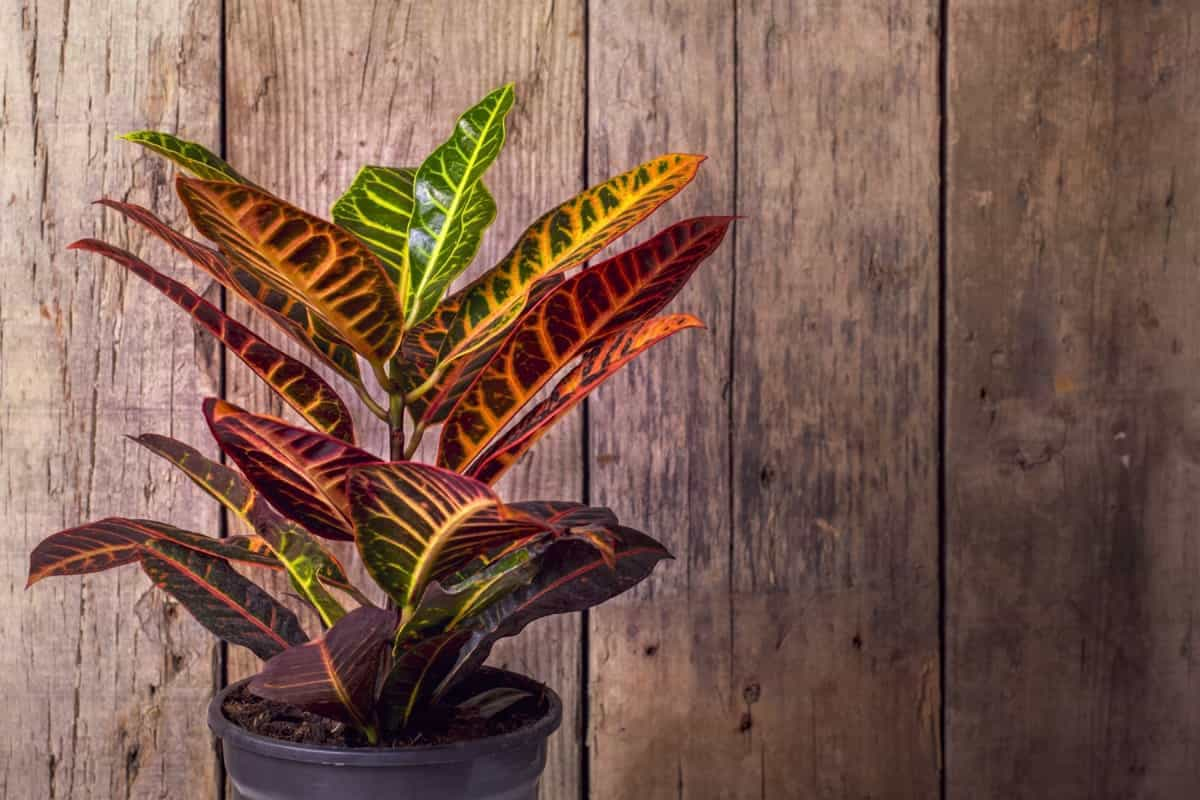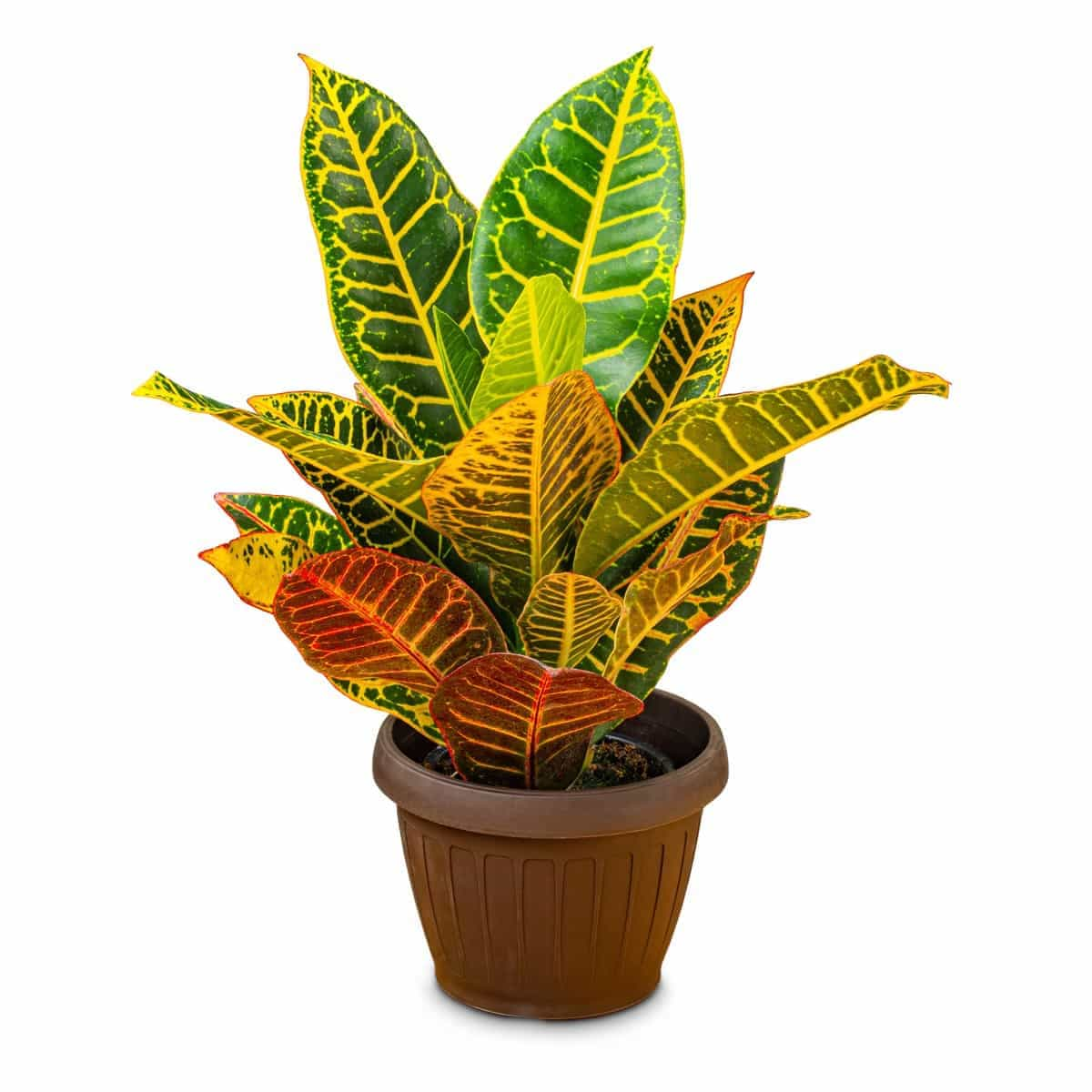Originating from Southern Asia and various Pacific regions, the Croton Petra thrives in warm and humid climates. Croton Petra, also known as Codiaeum variegatum ‘Petra’, is a stunning tropical plant that boasts vibrant and colorful foliage. To successfully grow Croton Petra, it’s important to understand its specific growth requirements.

How to Grow Croton Petra from Cuttings
Information About Croton Petra
| Common Name | Croton Petra |
| Botanical Name | Codiaeum variegatum |
| Family | Euphorbiaceae |
| Plant Type | Shrub |
| Sun Exposure | Full, partial |
| Soil Type | Moist, well-drained |
| Growth Rate | Medium |
| Soil | Well-draining soil |
| Water | Keep consistently moist but not soggy |
Step-by-Step Guide: Propagating Croton Petra from Cuttings
- Select a healthy stem: Look for a mature stem with several sets of leaves. Make sure it is free from any signs of disease or damage.
- Prepare the cutting and apply rooting hormone: Cut just below a leaf node using clean shears. Remove any lower leaves to expose at least one node. While not necessary, applying this can increase the chances of successful root development.
- Choose the right medium: Fill a small pot with well-draining soil or use a mix formulated for rooting cuttings.
- Plant the cutting: Insert the Croton Petra cutting into the soil, ensuring that at least one node is covered.
- Provide ideal conditions: Place the potted cutting in bright but indirect light and maintain warm temperatures between 21-27°C.
- Watch for roots: After two to four weeks, check for signs of root growth by gently tugging on the cutting; resistance indicates roots have formed.
- Transfer to larger pot: Once roots have developed, carefully transplant your new Croton Petra into a slightly larger container filled with well-draining soil mix.
Indoor Plant Care: Growing Croton Petra Successfully Indoors
Firstly, these tropical plants thrive in warm and humid environments, so creating the right conditions for them is essential. Begin by placing your Croton Petra in a location that receives bright but indirect light.
These plants prefer slightly moist soil. In terms of humidity, misting the leaves regularly or using a humidifier can help replicate their natural habitat. Croton Petra also appreciates being placed near other indoor plants or on trays filled with water and pebbles. Fertilize Croton Petra every 2-4 weeks with a balanced fertilizer diluted according to package instructions.
Outdoor Planting: Tips for Growing Croton Petra in Your Garden
Firstly, choose a suitable location with plenty of bright, indirect sunlight. While these plants can tolerate shade, they thrive best when exposed to ample light. Next, consider the soil conditions. Incorporating soil organic matter can help improve drainage while providing essential nutrients for healthy growth. Dig a hole larger compared to the root ball of your Croton Petra planting.
In case you missed it: How to Grow Plumeria from Cuttings: Best Practices for Potting and Transplanting

Remove the Croton Petra plant from its container and place it in the hole at about the same depth as it was previously planted. Backfill with soil and gently tamp down around the base of the plant. Once planted, regular watering is crucial during hot summer months or prolonged dry spells. When necessary, keep an eye on moisture levels and water deeply without allowing water to pool around the roots.
Winter Care for Croton Petra: Keeping Your Plant Healthy During Cold Months
As the cold months approach, it’s important to properly care for your Croton Petra to ensure its health and vitality during winter. While this tropical plant thrives in warm climates, it can be a bit more challenging to maintain in colder regions. However, with some extra attention and precautions, you can enjoy the beauty of your Croton Petra all year round.
Make sure to bring your Croton Petra indoors before temperatures drop below 15°C. This plant is sensitive to cold temperatures, and frost can cause severe damage or even death. Place it near a window where it can receive bright but indirect sunlight. Avoid placing Croton Petra near drafts or heat sources such as radiators or vents. Sudden temperature fluctuations can harm its foliage and overall health.
Choosing the Right Cutting: Identifying the Best Stem for Propagation
Choosing the right stem is crucial for successful root development. The ideal cutting should be healthy and mature, about 4-6 inches long. Look for stems with at least two or three sets of leaves, as these are more likely to produce roots. Examine the plant carefully to identify the best stem for Croton Petra propagation. Avoid selecting too young or old stems, as they may not root well. Choose stems that are firm and green in color, indicating active growth.
Another important factor to consider is the plant’s location where you take the cutting. Choose a stem that has new growth at its tip, but avoid those with flowers or buds. By carefully selecting and identifying the best stem for propagation, you can increase your chances of success in growing healthy Croton Petra plants from cuttings.
Preparing the Cutting: Proper Techniques for Pruning and Preparing Croton Petra Cuttings
Select a healthy stem about 4-6 inches long. Choosing a stem with at least two sets of leaves is important, increasing the chances of rooting. Next, cut just below a leaf node on the selected stem using clean and sharp pruning shears or scissors. This node is where new roots will emerge from. Remove lower leaves near the cut end to reduce moisture loss during propagation.
In case you missed it: Propagating String of Hearts from Cuttings, Division Through Water, and the Soil

Covering them with plastic bags or placing them in mini-greenhouses can prevent excessive transpiration and promote humidity around your cutting during this delicate growth phase. This helps create a favorable environment for root formation without depriving them of necessary oxygen exchange.
Rooting Medium Options: Selecting the Ideal Substrate for Successful Root Development
Choosing the right rooting medium is crucial for successful root development. The rooting medium provides essential nutrients and a conducive environment for the cutting to establish roots and grow into a healthy plant. One popular substrate for your Croton Petra cutting is a well-draining potting mix that contains a combination of peat moss, perlite, and vermiculite.
This mixture allows excess water to drain from the roots while retaining enough moisture for optimal growth. Another option is using a soilless mixture such as coco coir or sphagnum moss. These substrates provide excellent moisture retention and promote faster root development. They are also lightweight and sterile, reducing the risk of diseases or pests affecting your cuttings.
Propagation Methods: Exploring Different Techniques for Growing Croton Petra from Cuttings
Water propagation – Place a healthy cutting with at least two nodes in a glass of water. Make sure to change the water every few days to prevent bacteria growth. Within a few weeks, you should start seeing roots forming.
Soil propagation – Prepare a well-draining potting mix and insert your cuttings into the soil. Keep the soil moist. With proper care and patience, your Croton Petra will develop strong roots and start growing.
Air layering – Air layering could be an interesting technique to try. This involves making a small incision on a stem of your existing plant and then wrapping it with moist sphagnum moss or peat moss before covering it with aluminum foil. After some time, new roots will form within the moss layer, allowing you to detach that section as an independent plant. Using hormone rooting powder can also aid in successful propagation by encouraging root development on your cuttings.
Maintenance and Troubleshooting: Essential Tips for Ensuring the Health of Your Croton Petra Plant
- Light requirements: These plants love bright, indirect light. Place them near a window where they can receive ample sunlight without exposure to direct rays.
- Fertilizing: Feed your Croton Petra with a balanced liquid fertilizer every 2 weeks during the spring and summer, reducing frequency in fall and winter.
- Pruning: Regularly trim damaged or leggy growth to encourage bushier growth and maintain its vibrant appearance.
- Pests and diseases: Check for common pests like spider mites or mealybugs, which can be controlled with insecticidal soap or neem oil treatments if necessary.
In case you missed it: Propagating Peace Lily from Cutting: A Step-By-Step Guide

Conclusion
Croton Petra plant thrives in warm, humid climates, making it ideal for outdoor cultivation in tropical areas. However, with proper care and attention, you can also enjoy the beauty of Croton Petra indoors. Propagating Croton Petra from cuttings is a simple way to expand your collection of these beautiful Croton Petra plants.
- Feed Your Flock for Less: Top 10 Tips to Save on Chicken Feed
- Ultimate Guide to Ossabaw Island Hog: Breeding, Raising, Diet, and Care
- Hatching Answers: The Top 10 Reasons Your Chickens Aren’t Laying Eggs
- Eggs and Economics: Breaking Down the Cost of Raising Backyard Chickens
- Defend Your Greens: Proven Methods to Keep Iguanas Out of Your Garden
- Ultimate Guide to Cinnamon Queen Chicken: A Comprehensive Guide for Beginners
- Ultimate Guide to California Tan Chicken: Breeding, Raising, Diet, Egg-Production and Care
- Ultimate Guide to Marsh Daisy Chicken: Breeding, Raising, Diet, and Care
- 10 Types of Chicken Farming Businesses You Can Start for Profits